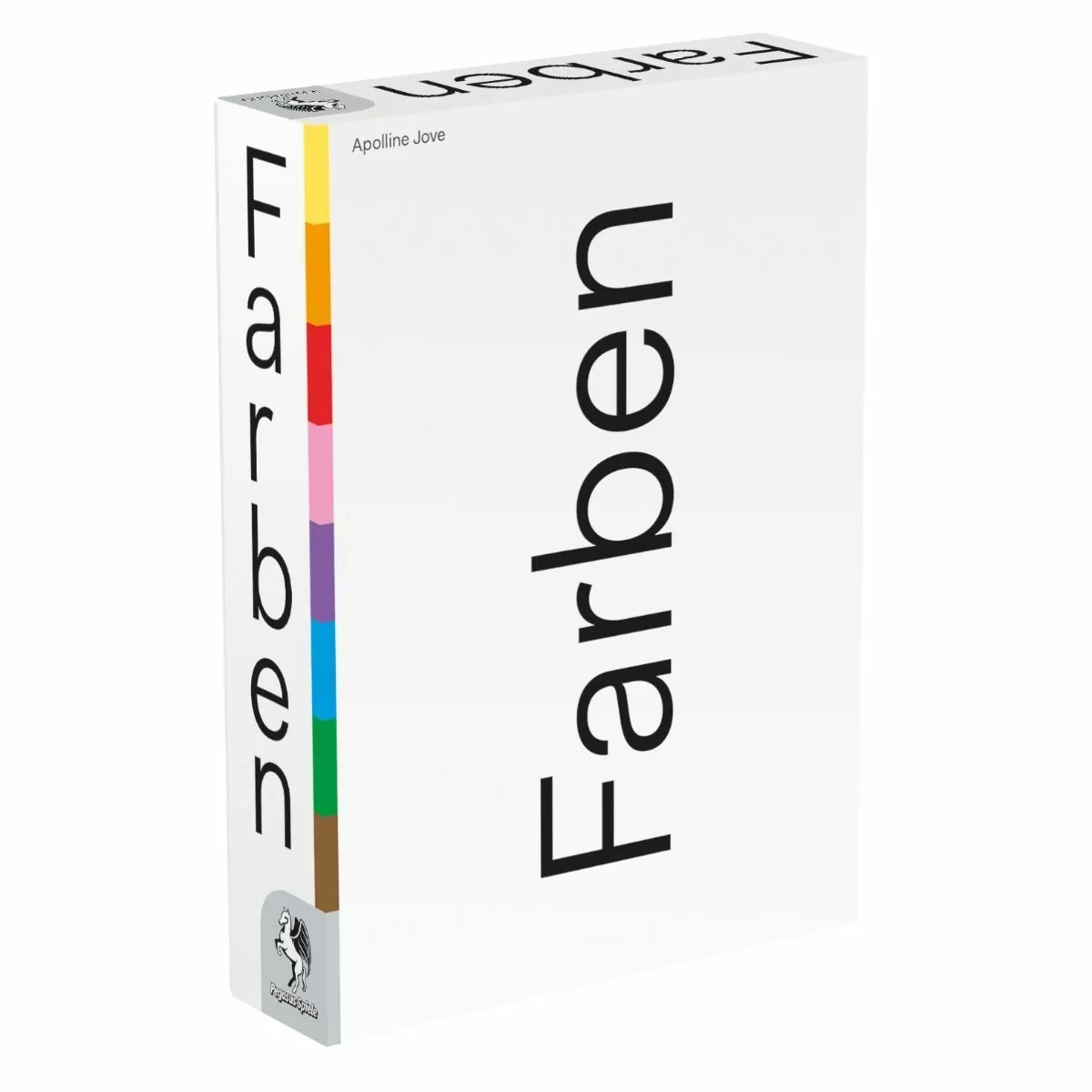Language
Farben
Availability: Back-Order Item #: 206462
NZD $44.99
- Out of stock
- SKU: SG8040 Manufacturer SKU
- RRP: NZD $44.99 Recommended Retail Price
- Barcode: 752830862678 Product barcode
- 12 items per case Case quantity
Love is...green? In the vivid storytelling game Farben, every color tells a story. Associate a color with a word, then tell a story of why you connect those two. If the word were "school", for example, you might hear the following: Player 1 plays purple: "I dyed my hair purple, purchased leather gear for several hundred dollars, and wore make-up in my very short Goth-phase. I quickly realized that I didn't fit in the scene as I am a rather happy person and have a hard time not constantly smiling." Player 2 plays red: 'My high school time was stressful because I wasn't a good student. I worried before each exam how I was going to explain all the mistakes marked with red to my parents." Player 3 plays black: 'I was totally in love with a fellow student from another class. I got up every day at 6:30 a.m. to catch the early bus to ride with her to school. It was still dark at that time, and that's why I chose black." Each round, you associate one of your twelve color cards with a word card and start telling a story. After all stories have been told, players tuck their color cards below the word card and set it aside. After ten words have been played, the scoring phase begins. Another player selects one of the visible words for you, and your task is to recall all of the colors played by the other players and yourself without looking. You earn points for correctly naming these colors. This sounds almost impossible at first, but through the stories the colors become easier to remember. Additionally, you score points on the other players' turns when they can remember your color. You win the game if you can remember best who assigned which color to specific words and if multiple players can remember the colors you assigned to the words.
Love is...green? In the vivid storytelling game Farben, every color tells a story. Associate a color with a word, then tell a story of why you connect those two. If the word were "school", for example, you might hear the following: Player 1 plays purple: "I dyed my hair purple, purchased leather gear for several hundred dollars, and wore make-up in my very short Goth-phase. I quickly realized that I didn't fit in the scene as I am a rather happy person and have a hard time not constantly smiling." Player 2 plays red: 'My high school time was stressful because I wasn't a good student. I worried before each exam how I was going to explain all the mistakes marked with red to my parents." Player 3 plays black: 'I was totally in love with a fellow student from another class. I got up every day at 6:30 a.m. to catch the early bus to ride with her to school. It was still dark at that time, and that's why I chose black." Each round, you associate one of your twelve color cards with a word card and start telling a story. After all stories have been told, players tuck their color cards below the word card and set it aside. After ten words have been played, the scoring phase begins. Another player selects one of the visible words for you, and your task is to recall all of the colors played by the other players and yourself without looking. You earn points for correctly naming these colors. This sounds almost impossible at first, but through the stories the colors become easier to remember. Additionally, you score points on the other players' turns when they can remember your color. You win the game if you can remember best who assigned which color to specific words and if multiple players can remember the colors you assigned to the words.
| Board Game Genre | Multiplayer, Card Game |
|---|---|
| Weight (kg) | 0.294835 |
| LPG Bestseller | No |
| Item Group | Board Games |
| Length (cm) | 18.034 |
| Width (cm) | 4.064 |
| Height (cm) | 12.7 |
| Publisher | Stronghold Games |
| Discontinued Product | Yes |
| Exclusive to LPG | No |
| Available for Resale | Yes |
| Dangerous Good | No |
| Allow Export | Yes |
| Core Products | No |

 AU
AU
